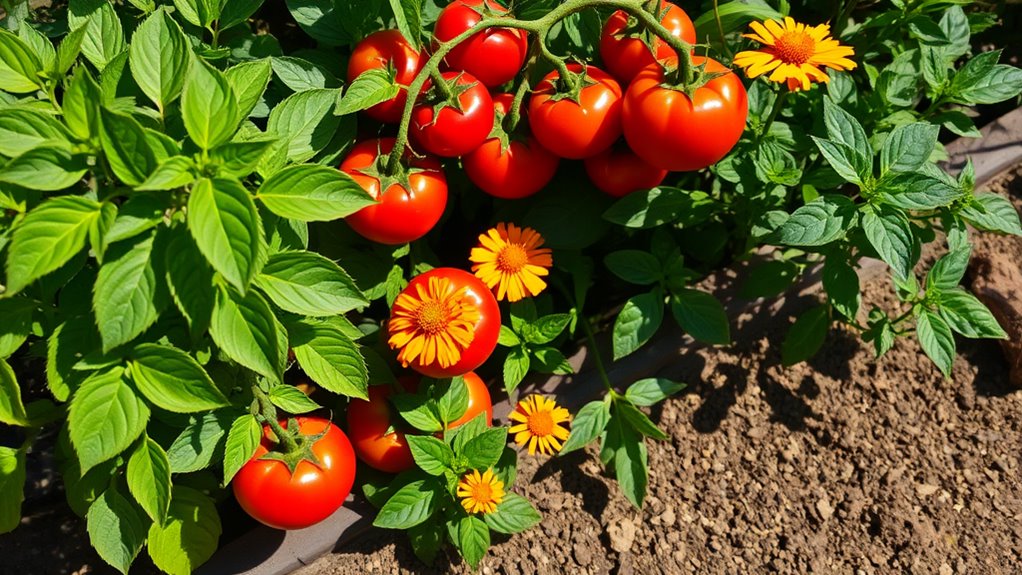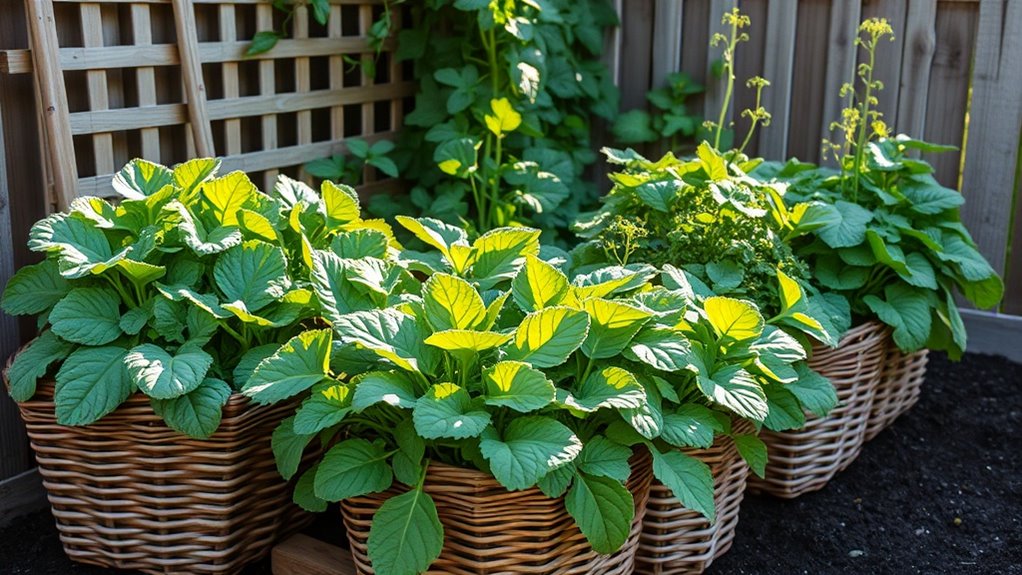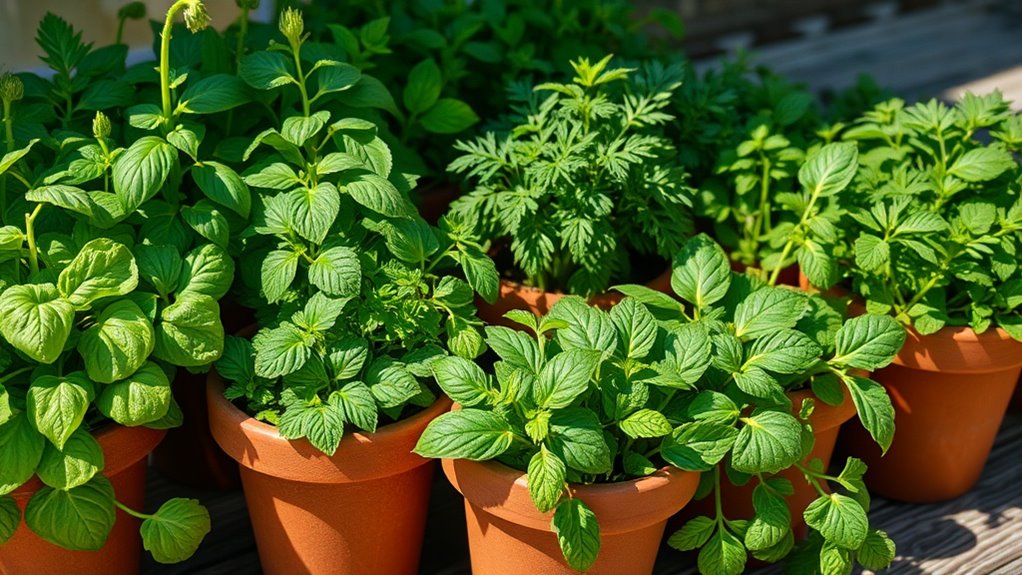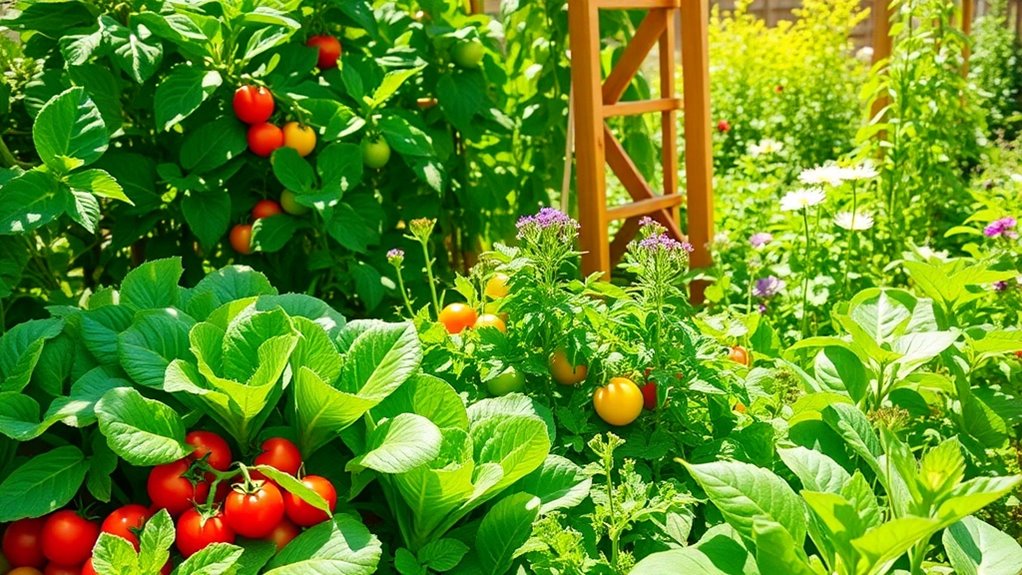The Best Companion Plants for Tomatoes and Peppers
When it comes to maximizing your tomato and pepper yields, companion planting is essential. By pairing these crops with the right companions, you can enhance growth, repel pests, and create a healthier garden ecosystem. For instance, certain herbs and flowers can provide significant benefits. However, not all plants are suitable neighbors. Understanding which companions to choose—and which to avoid—can make all the difference in your gardening success. Let’s explore the most effective options available.
Key Takeaways
- Basil enhances the flavor of tomatoes and peppers while repelling pests like flies and mosquitoes.
- Marigolds deter nematodes and attract beneficial insects, improving overall garden health.
- Garlic wards off aphids and spider mites, promoting healthier tomato and pepper plants.
- Onions, when planted nearby, can repel aphids and support the growth of peppers.
- Spinach effectively maximizes space and suppresses weeds between rows of pepper plants.
Benefits of Companion Planting
Companion planting offers numerous benefits that enhance the growth and health of your tomato and pepper plants. By strategically pairing plants, you can improve nutrient uptake and reduce pest infestations.
For instance, planting basil near your tomatoes can boost flavor while repelling harmful insects.
Utilize companion planting tips like alternating root depths to optimize soil usage, allowing both plants to thrive.
Additionally, certain combinations can stimulate growth through allelopathy, where one plant releases substances that promote another’s development. Companion planting techniques can help you select the best pairings for your garden.
This method not only increases yields but also fosters biodiversity, creating a healthier garden ecosystem overall.
Best Companion Plants for Tomatoes
Best Companion Plants for Tomatoes
When selecting companion plants for tomatoes, consider those that not only enhance growth but also deter pests. Some ideal choices include:
- Basil: It improves tomato flavor and repels flies and mosquitoes.
- Marigolds: These flowers deter nematodes and attract beneficial insects, providing pest control.
- Garlic: Known for its strong scent, garlic wards off aphids and spider mites. Additionally, using companion plants can help prevent common mistakes that gardeners often make when growing tomatoes.
Best Companion Plants for Peppers
Choosing the right plants to accompany peppers can significantly enhance your garden’s productivity and health. Companion plants not only deter pests but also improve nutrient uptake and flavor. Here are some excellent companions for your peppers:
| Companion Plant | Benefits | Planting Tips |
|---|---|---|
| Basil | Enhances flavor, repels pests | Plant close to peppers for best results |
| Marigold | Deters nematodes, attracts pollinators | Interplant among pepper rows |
| Spinach | Maximizes space, suppresses weeds | Sow in-between pepper plants |
| Onions | Repels aphids, enhances growth | Plant in clusters nearby |
Incorporating herbs like culinary herbs into your garden can provide both health benefits and flavor enhancements in your cooking.
Plants to Avoid Near Tomatoes and Peppers
To maintain a healthy garden, it’s crucial to recognize which plants can negatively impact the growth of tomatoes and peppers.
Certain companions can hinder their development or attract pests.
Here are three plants to avoid:
- Potatoes: They share similar diseases, risking blight and rot.
- Corn: It can attract the same pests, such as the corn earworm, compromising your crops.
- Fennel: This herb can inhibit the growth of both tomatoes and peppers due to its allelopathic properties. Additionally, ensuring proper soil preparation is vital for the health of your tomatoes and peppers.
Tips for Successful Companion Planting
Successful companion planting hinges on selecting the right plants that can enhance the growth and yield of tomatoes and peppers.
Start by grouping compatible plants, like basil and marigold, which repel pests and improve flavor.
Ensure proper spacing to avoid overcrowding, promoting air circulation and reducing disease risk.
Rotate your companion plants each season to maintain soil health and nutrient balance.
Monitor soil moisture, as some companions may compete for water.
Finally, observe your plants regularly; look for signs of stress or pest issues, and adjust your companions accordingly to create a thriving garden ecosystem. Additionally, consider using natural sprays to deter pests and protect your companion plants.
Happy planting!





